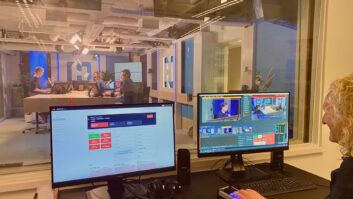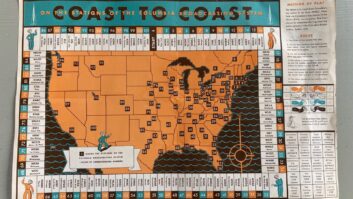The author is planning director at the United Kingdom’s Radio Advertising Bureau.
LONDON — Britain loves radio!

Mark Barber
At least that’s what all the audience stats suggest, with the Radio Joint Audience Research (RAJAR) audience survey showing that radio is listened to by more people than ever, and the IPA TouchPoints multimedia survey highlighting that it is the second biggest medium in people’s lives after TV. And I know from speaking to my counterparts in other markets that radio audiences remain in robust health around the world.
Yet despite all this listener love, radio seems resolutely typecast as a tactical advertising medium — restricted to delivering the rational messages within the ad campaign, tasked with prompting a response or driving the sale. Now don’t get me wrong — radio is incredibly effective at mobilizing listeners to generate business for advertisers, as proven in previous Radio Advertising Bureau research studies and in myriad results-led case studies available through the RAB website.
But it seems that many advertisers remain indifferent to radio’s brand-building potential, unconvinced about the ability of an image-less medium to influence brand perceptions.
And that’s why we commissioned the study “Media and the Mood of the Nation” (conducted by Sparkler Research in Spring 2011 on behalf of the RAB) and set out to stimulate positive debate about radio as an advertising medium and to get it actively considered for more media schedules by seeking to understand the emotional influence of radio relative to other media, and to explore how this can benefit advertisers seeking to build brands.
OUR APPROACH
Our hypothesis was that people use media to affect their mood, rather than purely for information and entertainment.
Therefore the questions we set out to answer were: to what extent do media exert a positive influence on the way people feel; when does this happen and how does it vary by medium; and how does this affect engagement with advertising — especially on radio.
This challenging brief required us to capture people’s mood across different times of day, on different days of the week, and when consuming different media. The use of smartphone technology stripped out any potential media bias and allowed us to prompt a panel of 1,000 people with a text when we wanted them to respond.

Fig. 1: An SMS text message prompted panelists to respond to four questions.
The survey consisted of four simple questions — Where are you? What media are you consuming? How happy and energetic are you feeling? Why are you feeling this way? — allowing people to respond quickly and instinctively. (See Fig. 1.)
We followed this part of the test with a separate series of EEG tests to explore how the mood-enhancing effects of radio editorial increase engagement with advertising.

Fig. 2: Radio generated greater levels of happiness and energy.
THE FINDINGS
The three key findings (listed below) deliver a potent reminder of the influential emotional role that media and radio in particular play in people’s lives and suggest that, beyond its current tactical function, radio should be given far greater consideration for brand communication plans.
First:Media consumption has a significant positive effect on people’s mood.
When the respondents reported their media usage and their perceived levels of happiness and energy across the week, there is a clear correlation: people who were consuming media had higher scores for both energy and happiness. Second: Radio has the biggest influence on people’s happiness and energy, and on more occasions.
Radio is the highest scoring medium (compared to TV and online) for increasing both energy and happiness. This is true across all days of the week and almost all times of day. (See Fig. 2.) Third:This radio editorial effect is proven to enhance engagement with advertising.
Electroencephalogram (EEG) tests, which measure and record electrical activity in the brain, confirm that radio stimulates positive engagement activity in the brain. They also confirm that when ads are preceded by radio editorial, levels of positive engagement are sustained throughout the ad break. (See Fig. 3.)

Fig. 3: EEG tests show greater brain activity when listening to radio.
CONTEXT FOR RESULTS
People use TV, radio and online for different reasons and the qualitative stage of the study gave some insight into how this varies for each medium.
Given that Television’s central role lies in the area of escapism and entertainment, it’s perhaps surprising that it does not score highest of the three media for generating increases in happiness. Evidence suggests this may be because the key strength of TV — its ability to transport you elsewhere — brings with it an inevitable flat feeling when you return to the real world.
And whilst live “event” TV (such as “X-Factor”) is undeniably incredibly powerful content, it is simply not possible to sustainably fill the schedules with this genre of programming in today’s multichannel 24-hour TV broadcasting world.
These results suggest that the reality of day-to-day TV programming, while still highly valued by viewers and advertisers, has less effect on the viewer’s mood than perhaps anticipated.
The role of Online is still developing of course, as the user’s experience of Internet-based services becomes more blurred with other platforms, e.g., TV, radio, etc. But it’s clear from these comments that part of the reason why people like accessing things online is the multiplicity of possibilities it offers — beyond the functional offering of search, the Internet is home to easily accessible myriad entertainment such as gaming, music, social contact and beyond. Respondents explained how they felt a sense of achievement if they found what they were seeking online.
However, they also raised their irritations with the Internet, e.g., the misdirection of some links, and the frustration they experienced when streamed content was buffering.
Meanwhile these qualitative inputs help to explain why Radio generally outperforms the other media in terms of generating happiness and energy.
First, people use it to generate exactly that, Happiness and Energy. It’s chosen as a kind of lifestyle support system, to help people feel better as they go about their daily lives.
In this context, it was interesting that some respondents participating in the qualitative phase talked about how they didn’t realize how important radio is in their lives until they had participated in this exercise.
Second, the nature of radio programming also plays a role. Rather than the peaks and troughs that people claimed to experience with TV and Online, Radio provides a consistent environment themed and shaped to suit the listener’s needs at any given time of day, and one that is generally upbeat in tone.
Radio presenters are focused 100 percent on delivering a positive experience for the listener.
IMPLICATIONS
These findings are unequivocal — for advertisers, radio is a powerful emotional multiplier and represents a unique opportunity not just to influence how consumers feel about brands, but also to do so efficiently at important times for the brand across the week.
The challenge to advertisers and radio stations is to develop creative work that properly harnesses radio’s emotional influence, requiring a significant change in thinking from traditional radio advertising approaches:
First: Recognize that advertising that stimulates an emotional and instinctive response is much more effective than ads that seek to generate a rational and systematic assessment of information (source: IPA “Marketing in the era of accountability” study, Les Binet & Peter Field, 2007)
Second: Place more emphasis on tone and feel (through the use of voices, music and humour) over information (such as offers and deadlines)
Third: Acknowledge the editorial context — what is the tone of the station/s and programming that the ads will be played out in, and how can you exploit this to enhance emotional engagement with the advertising?
No one is denying that a big challenge lies ahead to persuade some of radio’s advertising customers to change their approach, but if they do, this research suggests that as well as the listener experience, their results will be significantly improved too!
RAB UK is a trade marketing body for radio. Mark Barber is responsible for developing its marketing and research strategy to generate greater favorability towards commercial radio among media decisionmakers and increase advertising spend in the medium. He is architect of the RadioGauge research project, developed in response to demands for improved accountability and creativity in radio advertising, and co-author of the book “An Advertiser’s Guide to Better Radio Advertising.”










